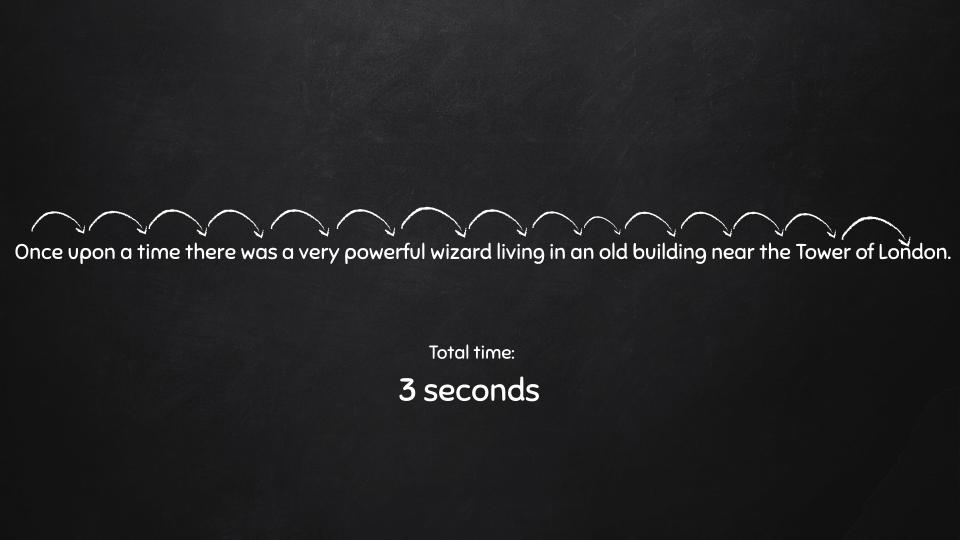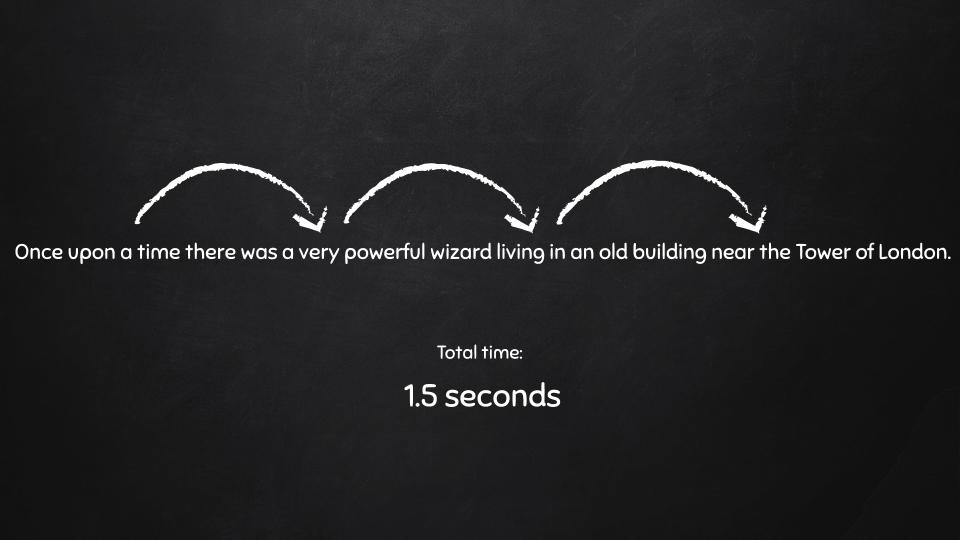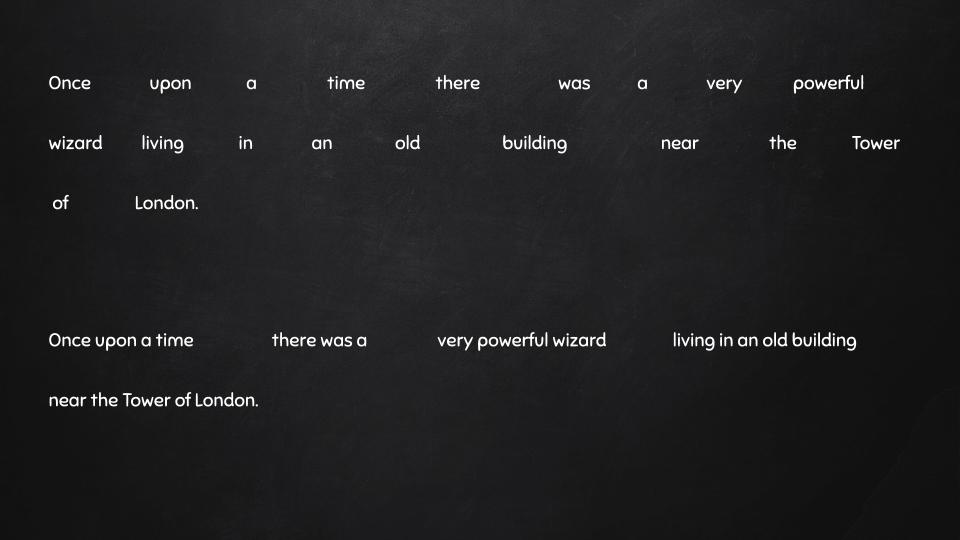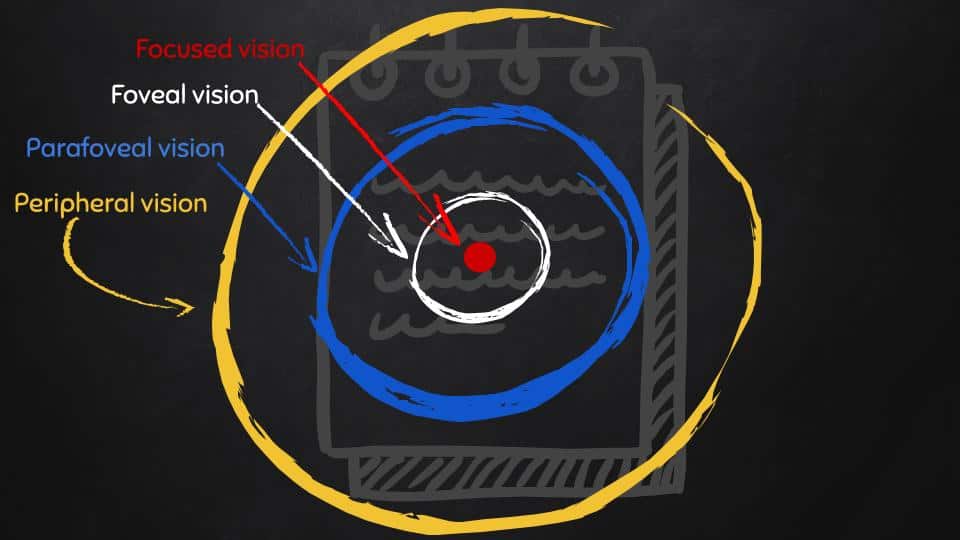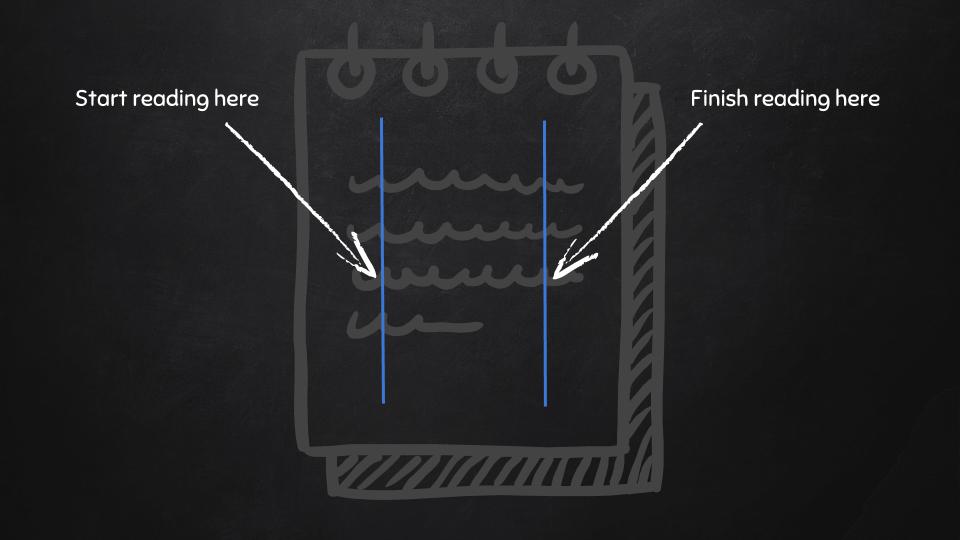Speed reading is a quirky discipline with a lot of disagreements. A battle between scientific studies and sweeping statements of speed reading gurus have been going on for a while. The debate is far from settled, and a lot of people are still wondering whether speed reading is even possible.
I will show you exactly how you can read and comprehend a lot faster than your current speed. Before getting started, you need to know what to expect. Let’s start by looking at what’s possible to achieve, according to science.
Is Speed Reading Legit?
In Tony Buzan’s The Speed Reading Book, he gives the readers a few impressive speed reading stories to make them eager to learn this skill.
Buzan mentions both president John F. Kennedy and Franklin D. Roosevelt as avid speed readers. Kennedy apparently read 1000 words per minute. Most of us read only 284 words per minute on average.
Sean Adam was once the world record holder in speed reading. Apparently, he read a dazzling 4450 words per minute.
But hang on…At that speed, you’re pretty much flipping through the pages as if you’re just looking at a picture book. How can that be possible? Well, both Sean Adams and president Kennedy taught themselves how to speed read from scratch, and they were both starting off like everyone else, plodding along with speeds of 284 wpm.
Is this true? Is it possible to read THAT fast?
Science suggests you can’t read more than about 500 words per minute without a loss of comprehension.
Defying science is usually a bad idea.
But how do you explain fully legit and non-secretive speed reading contests that rate people’s reading speed based on how much the reader has comprehended? Some of these readers apparently read thousands of words per minute.
With such opposing views, it’s difficult to draw a conclusion without consciously taking a side. The best I can do is to give you my opinion.
The Adaptable Brain
Putting aside speed reading for a moment, other more impressive feats that require fast mental processing have been achieved before, and this has been done by people who started off like everyone else and have developed these abilities from scratch.
There are people who memorize loads of information in a few seconds. Some people can do extreme calculations in their head quickly. And then you have piano virtuosos who can sight-read complex pieces that make us go: “How is that possible?”
And yet, we don’t deny that.
Here is the important part. Any skill you practice, you will get better at. If you practice the skill of reading and comprehending text fast, you will inevitably get better at it. This comes down to how your brain responds to your actions.
When you regularly push yourself to your limit and try to do something faster than you currently are, you tell your brain that in your life, there is a need to do whatever you’re doing faster or better. Your brain has no choice but to adapt. It has to because that’s how our brain has evolved.
The question that needs to be answered is this: Is it possible for most people to reach reading speeds of 1000 words per minute with 100% comprehension?
Unfortunately, I don’t think so.
Not necessarily because of some physical limitation of the human brain, but because most people won’t put in the thousands of hours required to get to this level. If it even is possible to reach those extremely high speeds, the training period is going to consume so much of your life that it might not be worth doing it.
But I have some good news for you.
If you’re an average reader who is not using any speed reading techniques, it’s totally doable to double or triple your reading speed.
It mostly comes down to changing your reading habits.
In this article, you will learn how to read up to 500 words per minute with 100% comprehension. That’s pretty fast.
Speeds beyond this are possible, but that’s skimming. You can still comprehend information with skimming, but in a different way. When skimming, you pick up only the most important information and filter out filler words and passages you deem as less important.
For now, let’s focus on how to master speed reading the right way.
1. Take in a Group of Words
The first realization you need to make is that your brain is capable of reading or taking in the information from 3-5 words at a time instead of just one word at a time.
Instead of spending a fraction of a second on each word in a line…
…spend the same fraction of a second on a group of words.
Now, you’re probably thinking that your comprehension will suffer as a result of speeding up like this, but it won’t. When you fixate or look at a single word at a time, your brain will try to comprehend each word on its own, but the words don’t really have any meaning when they’re on their own. They gain their meaning when they are grouped together.[1]
Here is the same sentence again.
Which of these two versions are faster to comprehend?
I think we both know the answer. Both reading and comprehension are faster when words are grouped together in meaningful bundles than when fixating on each individual word.
Get Rid of Old Reading Habits
If this is the case, why are most of us still looking at a single word at a time when reading?
It’s because of the habit we have from primary school. When you were taught how to read at a young age, you first learnt to look at one single letter at a time, and then you used them to form the words. Over time, as this process got faster, you learnt that you could quickly glance at one single word and all the individual letters in that word made sense.
But for some reason, it stopped there. No one actually taught you that you could take this a step further and take in a bulk of words in one visual gulp, and this habit hasn’t changed since.
However, you can still change this habit around. You just have to be aware of your eye’s foveal vision and take advantage of it.
As I have shown in the image below, we have three types of ”peripheral vision.”
Our peripheral and parafoveal vision can only detect vague shapes and colors, but the further we go in towards the middle of our vision, the more details we can see. There is a small area around our focused vision called the foveal vision. Anything inside this is captured by our eyes with enough detail to comprehend when reading. Taking advantage of this is essential for speed reading.
When reading from now on, you should change your old habit of reading only with your focused vision, to taking in text with your foveal vision as well. When looking at a page in a book, your foveal vision is around 4-5 cm wide.
Using your foveal vision while reading will have an amazing impact on your reading speed and might be enough to increase it by 70%.
2. Focus Your Reading
Focus is incredibly important if you want to learn how to master speed reading. Focus makes sure you don’t lose valuable time on unconscious back-skipping.
Back-Skipping
Back-skipping is like a tick where your eyes often glance backwards on words you have just read. It’s mostly entirely unnecessary. It often exists due to a lack of focus, and it’s probably your brain telling you subconsciously that you need to take a second glance at a word because you might have missed it.
To overcome this, you first have to be consciously aware that you’re doing it. Pay attention to this when you’re reading and notice whenever it happens. Then, try to avoid it next time.
An efficient exercise to learn how to stay more focused while reading and to avoid back-skipping is to read with a metronome.
Put the metronome on a slow beat so that you have enough time to read and comprehend a full line for each time the metronome ticks. When it ticks, go to the next line.
Your goal when reading is to have a consistent, even rhythm, almost like playing a musical piece. Using a metronome in this way will force you to pick up the meaning of the text as you go along and get rid of back-skipping.
Once you get comfortable with the current metronome speed, speed up the metronome. This will force you to read quicker.
Using a metronome is a bit weird for most people, but it is actually an extremely efficient way to practice staying focused while you’re reading.
If you do this over a period of time, you will learn how to pick up the comprehension as the words come instead of relying on back-skipping. When back-skipping is no longer an option, your brain and your focus will adapt so that it has to pick up the meaning of the words without using back-skipping.
Regression
Regression is related to back-skipping, but it’s different.
Regression is when you consciously choose to go back and read a word, phrase, or section again.
Normally, you regress for two reasons, either because you lacked the focus to pick up the meaning of the text in the first place, or because the text itself was tricky to understand.
While back-skipping is not allowed, regression is, but only when you do it for the right reason. Regression due to a lack of focus should be avoided. However, consciously going back to read a section because the text itself was tricky to understand is okay.
To avoid unnecessary regression, you need to focus intently on what you’re reading with an intention of understanding what it is about.
3. Narrow the Width of the Page
One of the best and most easily applicable pieces of advice I’ve come across is from Tim Ferriss. Tim Ferriss is an entrepreneur and author who has experimented a lot with the capacity of the human brain.
He has a great suggestion for how to take advantage of your foveal vision. Start reading each line one word further in on the page. Then, go to the next line before your eye goes all the way to the end of the line.[2]
If you do this, you will avoid unnecessary eye movements, and, as a result, increase your reading speed.
4. Use a Reading Guide
To avoid back-skipping and regression caused by a lack of focus, you need to learn how to control the movement of your eyes.
An untrained eye is looking a bit too sporadically around on the page, which has a negative impact on your reading speed.
To control your eye movements, it helps to use a pen or pencil as a guide. Use this guide to sweep across the lines as you read from left to right. This will help keep your eyes where they need to be looking instead of jumping around on the page.
Combine this with Tim Ferriss’ technique, and start and end the lines further into the page.
Using a reading guide will also help you get into an even reading rhythm.
5. Increase Your Language Skills
There is one more thing that has a huge impact on your reading speed. This is your language skills and vocabulary.
The whole reason why you’re able to understand what you’re reading is because of your understanding of language. Often, what is holding us back when reading is that we lack an understanding of the words.
The intro to a brilliant article published by Psychological Science in the Public Interest captures quite well what science currently says about reading speed:
“The way to maintain high comprehension and get through text faster is to practice reading and to become a more skilled language user (e.g., through increased vocabulary). This is because language skill is at the heart of reading speed.”[3]
If you want to read faster, read a lot and regularly, and make an effort to learn new words.
Final Thoughts
The way to master speed reading is the same as mastering any other skill. The more you do it, the better you will be. However, the field of skill acquisition has one additional lesson to teach us: You need to practice with the intention of getting better. And you need to constantly stretch your own abilities to the limit.
Featured photo credit: Thought Catalog via unsplash.com
Reference
| [1] | ^ | Tony Buzan: The Speed Reading Book |
| [2] | ^ | Tim Ferriss: How to Speed Read |
| [3] | ^ | Psychological Science in the Public Interest: So Much to Read, So Little Time: How Do We Read, and Can Speed Reading Help? |

